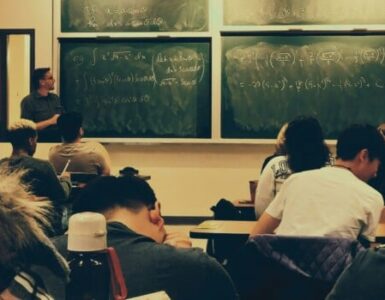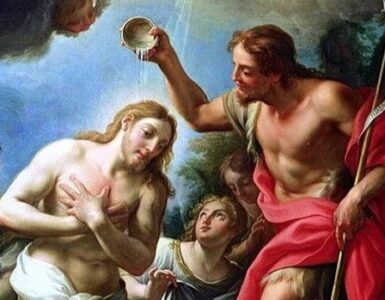At dawn’s light on a Saturday morning in early December, 1531, an elderly indigenous man named Juan Diego was walking the thirteen miles south to attend Mass at the parish church of Tlatelolco (tlah-teh-LOL-koh). As he passed by the hill of Tepeyacm(teh-PEH-yak) on the western side, he heard sweet music coming from its summit, “like the song of many precious birds . . . their songs exceeded the songs of the coyoltototl (koh-yol-TOH-totl, the jingle bellbird, Fig. 1.1) and the tzinitzcan (tseeNEETZ-kan, the trogon bird) and other precious birds” (NM:8).9
The sounds echoed around him as though the hills were singing back to these extraordinary birds. Surprised he was in this beautiful, musical place, he asks himself, “By any chance am I worthy of what I hear?” (NM:9). He wondered if he was in the holy place, the Flower World Paradise spoken about by his ancestors, the heavenly place from where all life and sustenance flowed: “Where am I? Where do I find myself? Is it possible that I am in the place our ancient ancestors, our grandparents, told about, in the land of the flowers, in the land of corn, of our flesh, of our sustenance (in xochitlalpan in tonacatlalpan,the Flower World Paradise), possibly in the land of heaven?” (NM:10)
Unsure of the answer, but finding his heart filled with a mysterious peace and joy, he looked eastward toward the top of the hill. At this point, a voice called him up. Juan Diego ascended, and there he encountered a most
glorious and beautiful woman amid a radiant, otherworldly landscape where the earth itself seemed to give off light. She identified herself as the Mother of God, using five Náhuatl terms specific to their unique understanding of God.
The Virgin pledged to the people of that land her maternal protection, and she asked Juan Diego that a temple, a “little house,” be built for her at the site of their meeting—the hill of Tepeyac—so that she may give her Son as a gift to the people. The Virgin of Guadalupe then commissioned Juan Diego to go to the bishop of Mexico City to tell him everything he had seen and heard so that her chapel may be built. Straightaway, and with great humility, Juan Diego approached the bishop, Juan de Zumárraga, and obediently delivered the message of the Blessed Virgin Mary. Unsurprisingly, the bishop did not immediately believe him. However, after further discussion and consideration, the bishop decided to test both Juan Diego and the apparition of the Virgin by requesting a miraculous sign to
prove the veracity of his story.
With this new assignment, Juan Diego devoted himself to his task. However,from the moment he dedicated himself to it, he began to encounter multiple obstacles, tests, and trials, including being blocked in his attempts and ridiculed by his own people. On the day he was expected to return to the hill to receive a sign from Mary, he was unable to go due to his uncle falling fatally ill. In his haste to retrieve a priest to give the last sacraments to his uncle, he made the decision to cross a pass at the northern end of the mountain range containing the little hill where he was supposed to meet the Virgin Mary and to take the east road southward toward Tlaltelolco to avoid her. However, his attempt was thwarted.
As he neared Tepeyac Hill on its eastern side, he found the Virgin Mary waiting for him. After speaking and being reassured by her that his uncle would be healed, the Queen of Heaven led him westward to the top of Tepeyac Hill. Traveling from an east to west direction (this is an important point we will later explain), she showed him an array of beautiful flowers to gather for the bishop. With great joy, Juan Diego carefully gathered these miraculous flowers in his tilma and brought them to the Virgin of Guadalupe, who arranged them with her own hands. Juan Diego then ran down the hill to present the flowers to the bishop as proof that the miracle of Mary’s mission to Mexico was true.
Upon his arrival at the episcopal palace, yet another miracle manifested itself. Entering the bishop’s room, Juan Diego opened his tilma to pour out the flowers before the bishop. As the flowers fell to the floor, the Virgin Mary’s image appeared on Juan Diego’s tilma. At the sight of this phenomenon, the bishop dropped to his knees and commanded that the image be placed in the cathedral for public veneration. Fifteen days later, the bishop organized a procession to a newly built “temple” on Tepeyac Hill, honoring the Mother of God and her Son who came to save the people of the New World.
And, as the story goes, the rest is history. The indigenous heard the private testimony of Juan Diego and, believing his story and the image on the tilma to be true, began to convert to Christianity in droves. Yet the story as most understand it today almost seems too simple to believe of the Nahua, who were
known to be a sophisticated people and culture. Could there be something more
that we’re missing?
Indeed, it is our contention that there is, in fact, something more: a great deal more. In order to truly understand how the indigenous would have viewed the Guadalupe Event, as well as all the subtext contained within it, we need to look at the background and the settings surrounding it through a study of Aztec poetry that links the Guadalupe narrative to ancient Pan-Mesoamerica.
Editor’s note: this article is excerpted from Guadalupe and the Flower World Prophecy: How God Prepared the Americas for Conversion Before the Lady Appeared, available now from Sophia Institute Press.














